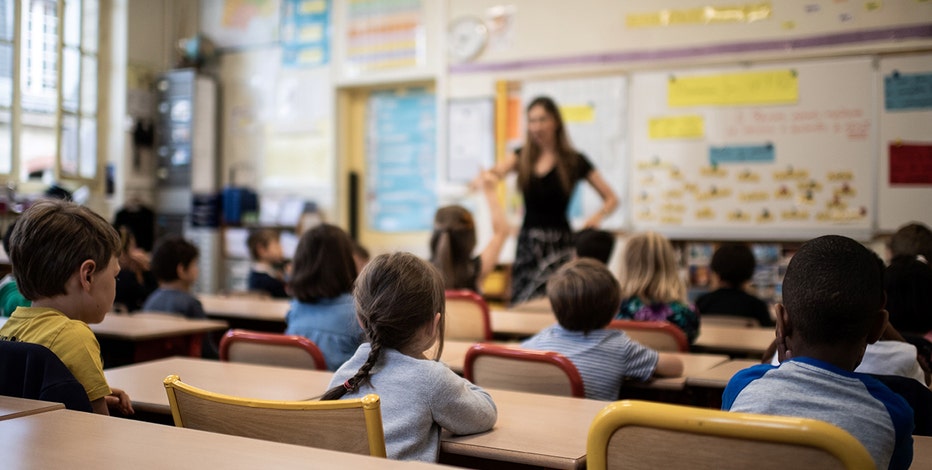This browser does not support the Video element.
Teachers Union opposes NYC congestion pricing plan
Supporters of the much debated congestion pricing plan say the toll will help reduce gridlock below 60th Street in Manhattan, while raising money to fix the MTA’s failing infrastructure. However, many opponents call the toll a "money grab". The United Federation of Teachers has long opposed the tolling program. The union says some of its educators drive from the outer-boroughs to Manhattan schools in the congestion zone and they will be among the hardest hit by the toll. United Federation of Teachers president Michael Mulgrew discusses.
NEW YORK CITY - The United Federation of Teachers has long opposed congestion pricing and are fighting to end it.
On Sunday, New York City became the first U.S. metro to implement a congestion pricing toll, and now, most drivers entering Manhattan's congestion zone will face a $9 toll.
How does congestion pricing impact teachers?
The United Federation of Teachers says some of its educators drive from the outer boroughs to Manhattan schools in the congestion zone, and they will be among the hardest hit by the toll.

Children listen to teacher in classroom. (MARTIN BUREAU/AFP via Getty Images)
The United Federation of Teachers has long opposed the congestion pricing plan in the city. The UFT currently has a lawsuit with Staten Island, Brooklyn, Queens and the Bronx trying to get congestion pricing to stop.
United Federation of Teachers president Michael Mulgrew said on Good Day New York that if teachers were exempt from congestion pricing, "that would be okay, but everyone else is still affected."
"This is $2,000 to $4,000 coming out of their pockets after all the other taxes they pay," Mulgrew said.
Mulgrew said this all has to do with the MTA.
"I don't think any statement they've ever made has no validity with anyone, because everything they've ever done, the whole reason why they are in this mess is because of their gross incompetence," Mulgrew said on Good Day New York.
"You're asking people, the workers, restaurant workers, cops, teachers, and firemen to give you $2,000 to $4,000 a year because of your gross incompetence. That's what this is about," Mulgrew added.
"Congestion relief helps the 90% of teachers and all New Yorkers who take transit to work and wherever else they need to go. A federal judge heard — and rejected — the union's complaints about the MTA's exhaustive environmental review process and instead green lit our effort to reduce congestion, clean up the air and upgrade transit," MTA spokesperson Amanda Valdes said in a statement.
The MTA also said they will give air filtration systems to high schools in the Bronx.
Mulgrew made it clear on Good Day New York that the MTA only agreed to do this after the UFT sued.
"The highest asthma rate in the country is in that district," Mulgrew said. "Only because of our lawsuit they agreed to high schools. But let me be clear, you can go to a pre-K center, 3-year-olds, 4-year-olds, 5-year-olds, the majority of them have asthma in that district."
Mulgrew wonders why it's only happening in high schools.
"It's only about the money with these people. It's not about the health of the children. Not just the children of the south Bronx, but all of the city. I don't understand why people aren't going crazy over this issue," Mulgrew added.
The UFT is going to continue the fight to end congestion pricing.
"We're teachers. We will always be there to protect our students," Mulgrew said.
Track breaking congestion pricing news and local headlines on the FOX LOCAL app. Click here to download on iPhone and here to download on Android.
What is congestion pricing?
Congestion pricing is an electronic tolling system that charges vehicles for entering Manhattan's Congestion Relief Zone (CRZ) — the area below 60th Street, excluding certain highways like the FDR Drive and West Side Highway. The program aims to:
- Reduce gridlock in Manhattan's busiest areas.
- Encourage public transit use.
- Fund approximately $15 billion in transit infrastructure improvements.
Congestion pricing map
Vehicles entering the Manhattan zone, which are local streets and avenues at or below 60 Street – near Central Park – will be charged a toll.
This map shows the zone for New York City congestion pricing.
Who will be charged?
Drivers entering the CRZ will pay a toll, but there are exceptions and discounts for certain roads.
- Exempt roads: No tolls will be charged for vehicles using the FDR Drive, West Side Highway, or roads connecting the Hugh L. Carey Tunnel.
- Local traffic: Cars that stay within the CRZ or use exempt roads without crossing the boundary are not charged.
How does it work?
Most tolls will be collected through E-ZPass, thanks to gantries already set up at the congestion zone entry points.
Drivers without an E-ZPass will be mailed a bill and forced to pay a higher rate.
Fees vary depending on vehicle type and time of day:
Peak hours (5 a.m. – 9 p.m. weekdays l 9 a.m. – 9 p.m. weekends)
- Passenger vehicles: $9 with E-ZPass ($13.50 by mail).
- Motorcycles: $4.50 with E-ZPass ($6.75 by mail).
- Small trucks: $14.40.
- Large trucks and buses: $21.60.
Off-peak hours (9 p.m. – 5 a.m. weekdays l 9 p.m. – 9 a.m. weekends)
Toll rates drop by 75%:
- Passenger vehicles: $2.25.
- Motorcycles: $1.05.
The Source: This article uses published information from the Associated Press.
